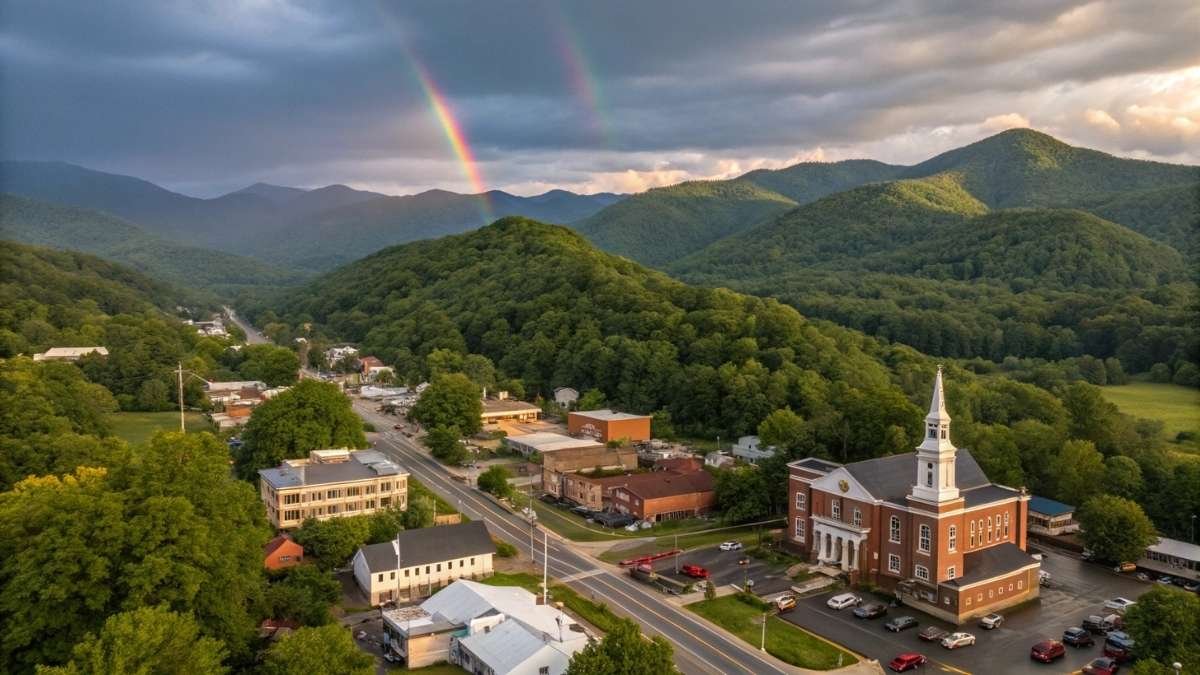
You don’t need a million bucks to wake up surrounded by trees, birdsong, and a sky not blocked by high-rises. There are towns out there—tucked quietly beside vast national forests—where life slows down, costs less, and the air feels like a fresh start.
These aren’t crowded tourist magnets or overpriced mountain hubs. They’re the kind of places where trails start at the edge of your yard, neighbors still wave, and your money stretches further than you’d expect.
If you’ve ever dreamed of retiring into real peace—not just quiet—this list might just change everything you thought you knew about affordable living.
1. Show Low, Arizona – Apache-Sitgreaves National Forest

Show Low is one of those mountain towns that often slips under the radar—until someone visits and wonders why they didn’t move there years ago. Tucked into the White Mountains of eastern Arizona, this town sits at about 6,300 feet, offering a climate that’s cool in summer, snowy in winter, and blissfully dry most of the year. The surrounding Apache-Sitgreaves National Forest spans nearly 2.6 million acres, giving you access to trails, lakes, and silence, without the tourist bottlenecks you’ll find near big-name parks.
What makes Show Low especially appealing for retirees is the balance of small-town peace with enough services to stay comfortable. You’ve got a hospital, a community college, and big-box stores—without big-city stress. Housing is still relatively affordable, especially compared to pricier parts of Arizona like Sedona or Flagstaff. And yes, it’s still Arizona, but you can leave the desert heat behind up here.
You’ll also find a friendly, slow-paced culture that makes it easy to settle in. Whether you’re casting a line in Fool Hollow Lake or sipping coffee while elk wander through a neighbor’s yard, there’s a sense of stillness here that sticks with you.
Quick Info
- Best Months to Visit: May–October (mild temps, trails open)
- Population: ~11,700
- Median Home Price: ~$290,000
- Nearest Hospital: Summit Healthcare Regional Medical Center
- Outdoor Highlights: Hiking, kayaking, trout fishing, backroad drives through ponderosa pine
- Closest Airport: Show Low Regional Airport (small), Phoenix Sky Harbor (3 hrs)
2. McCall, Idaho – Payette National Forest

McCall is what happens when a ski town grows up but never sells out. Sitting on the shores of Payette Lake and surrounded by the 2.3-million-acre Payette National Forest, this Idaho gem delivers alpine beauty without the Aspen attitude—or prices. It’s lively in winter thanks to the local ski area, Brundage Mountain, but things mellow out in the shoulder seasons, when retirees and locals have the trails, rivers, and lakes mostly to themselves.
Living here means you get four full seasons, which many retirees crave. There’s something satisfying about watching the snow roll in during winter, only to give way to wildflowers in June. And for those looking to stay active, McCall gives you options: cross-country skiing, fly-fishing, boating, and endless trail hikes. Yet when it’s time to relax, you’ll find quirky cafes, breweries, and even a local symphony.
Housing prices have nudged upward in recent years, but if you’re coming from California, Seattle, or Denver, they still feel refreshingly reasonable, especially for a waterfront town. Healthcare access is solid too, with a well-regarded regional hospital right in town.
Quick Info
- Best Months to Visit: June–September for hiking; December–March for winter sports
- Population: ~3,800
- Median Home Price: ~$430,000
- Nearest Hospital: St. Luke’s McCall
- Outdoor Highlights: Alpine lakes, skiing, fly-fishing, huckleberry picking
- Closest Airport: Boise Airport (2.5 hrs)
3. Silver City, New Mexico – Gila National Forest
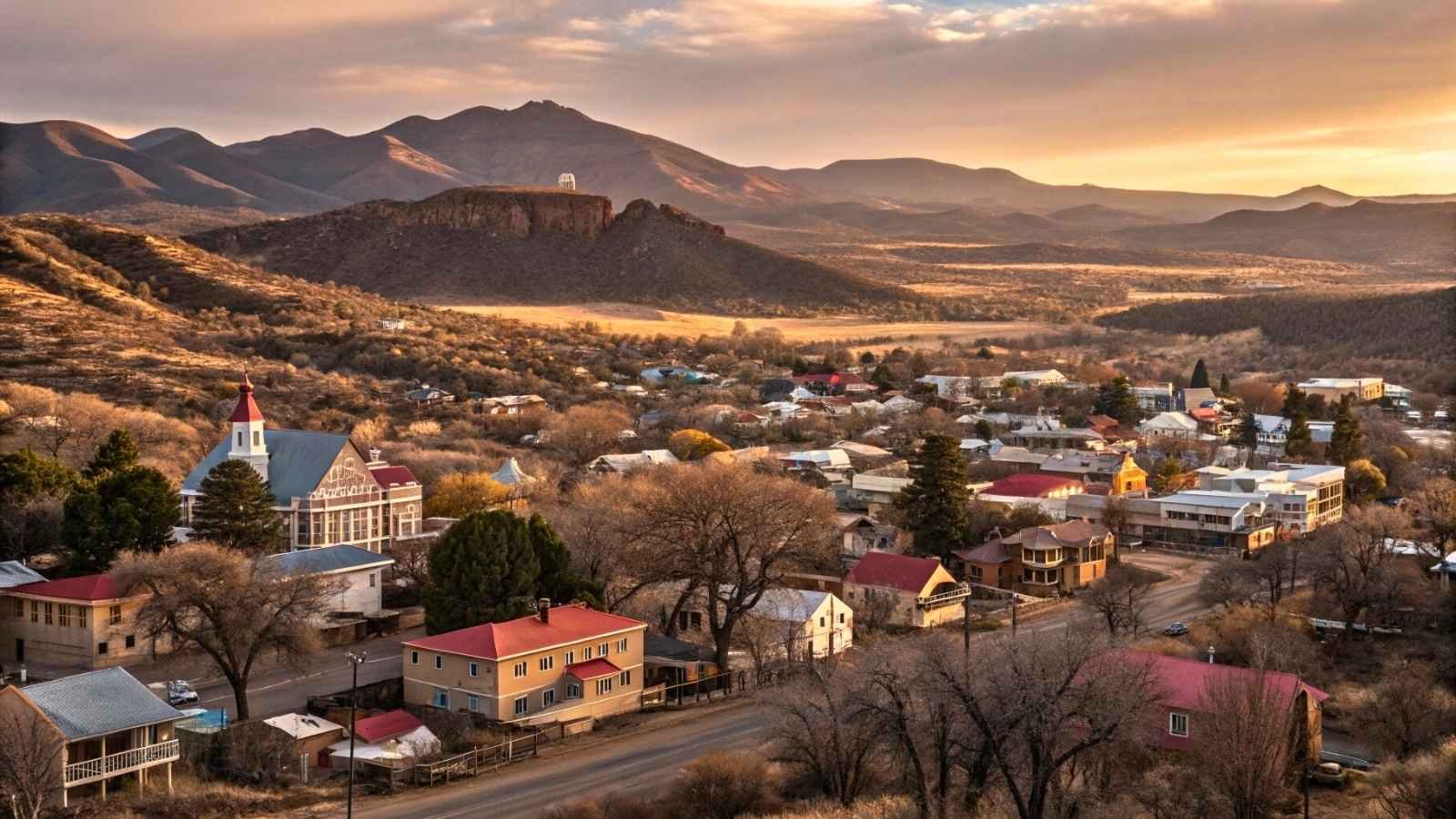
Silver City blends artsy energy with rugged solitude, tucked just west of the Continental Divide and backed by the massive Gila National Forest. This is where you go when you want off-the-beaten-path, but still want a morning latte and a bookstore to wander through. The forest itself is a stunning mix of high desert and pine-covered mountains, with the Gila Wilderness Area—America’s first designated wilderness—right in your backyard.
It’s also one of the more affordable retirement options on this list. Housing remains well below the national average, and New Mexico’s tax structure is relatively friendly to retirees. You can hike to ancient cliff dwellings in the morning, then catch a folk music show at a community venue in the evening. The town has a unique rhythm—slow, friendly, and deeply connected to its natural surroundings.
Healthcare isn’t far behind either. While Silver City is small, it’s home to Gila Regional Medical Center, and larger hospitals are within reach if needed. The town’s size also makes it walkable, and the mild climate means year-round outdoor activity is completely doable.
Quick Info
- Best Months to Visit: April–June and September–November
- Population: ~9,500
- Median Home Price: ~$215,000
- Nearest Hospital: Gila Regional Medical Center
- Outdoor Highlights: Cliff dwellings, hot springs, desert hikes, remote solitude
- Closest Airport: El Paso International (3.5 hrs)
4. Laramie, Wyoming – Medicine Bow National Forest
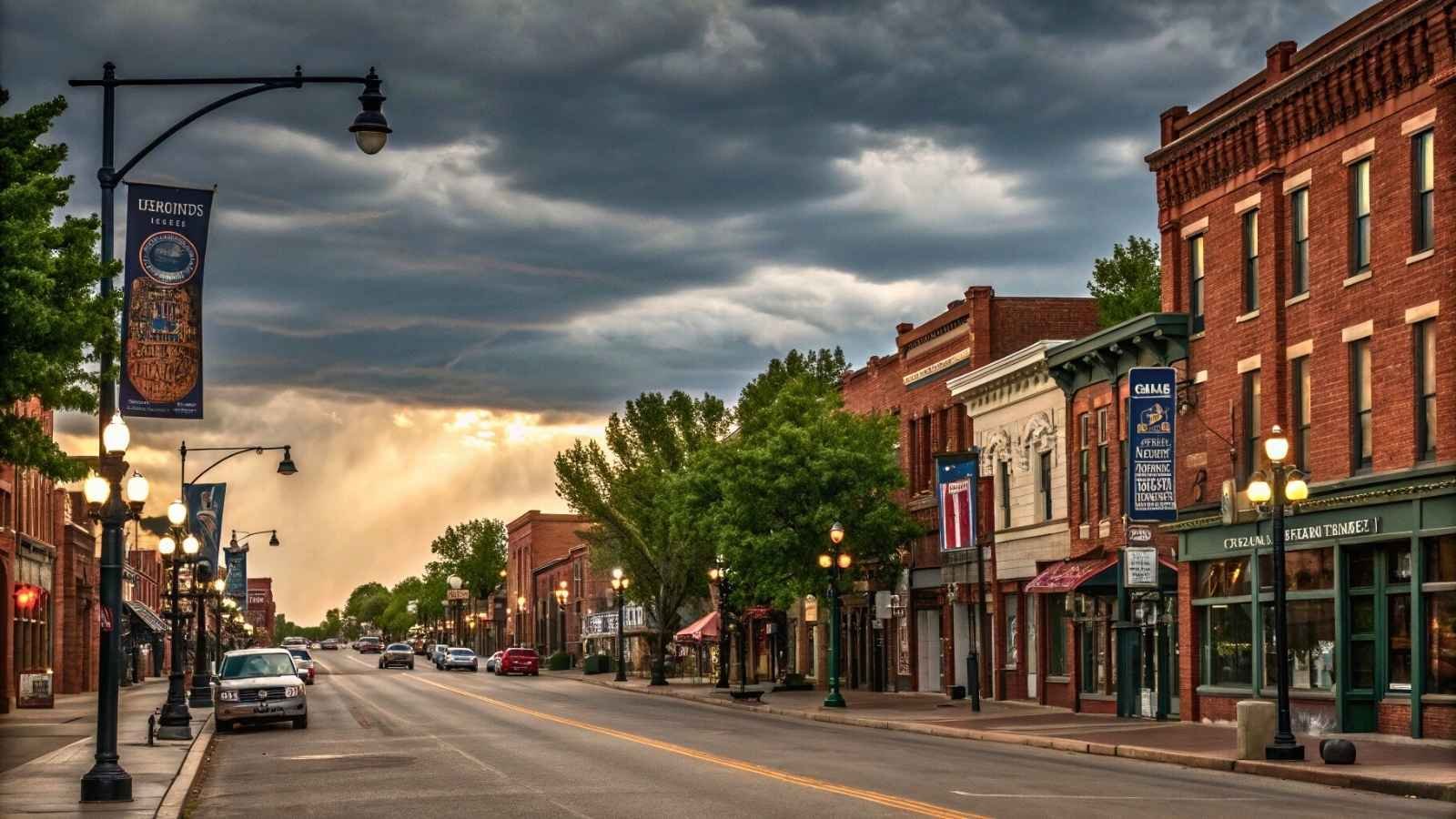
Laramie is a hidden gem for those who like their scenery big and their towns small-but-lively. This college town sits just west of the Medicine Bow National Forest, where granite peaks, alpine lakes, and lodgepole forests create some of the most underrated hiking and camping in the West. The town blends western grit with intellectual curiosity thanks to the University of Wyoming, which keeps the population young, the arts active, and the events calendar full.
The cost of living in Laramie is notably lower than in many mountain towns, and you get real winters and long summers, both scenic and activity-filled. Whether it’s cross-country skiing in the Snowy Range or fly-fishing the Laramie River, there’s always something right outside your door. And unlike some remote forest towns, Laramie has good infrastructure: fiber internet, walkable neighborhoods, and full-service hospitals.
Plus, the sense of space here is unmatched. With few crowds and open skies, it feels like a place where you can finally exhale—and still be close to what you need.
Quick Info
- Best Months to Visit: June–September
- Population: ~31,000
- Median Home Price: ~$300,000
- Nearest Hospital: Ivinson Memorial Hospital
- Outdoor Highlights: Snowy Range hikes, alpine lakes, rock climbing, stargazing
- Closest Airport: Laramie Regional Airport (small); Denver International (2.5 hrs)
5. Grants Pass, Oregon – Rogue River-Siskiyou National Forest
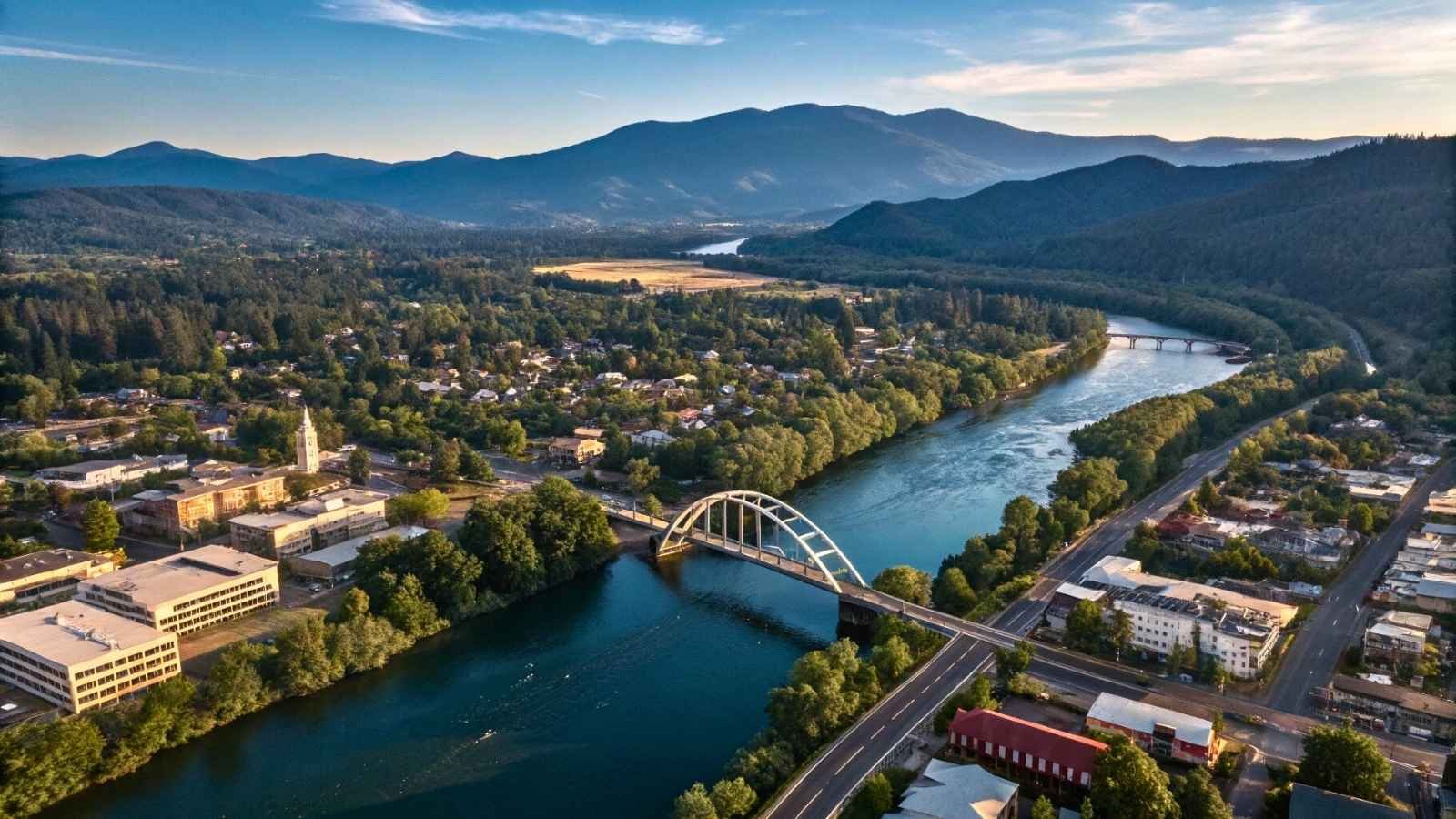
Set along the banks of the wild Rogue River, Grants Pass has long been a favorite with nature lovers, but it’s increasingly drawing in retirees for its mild climate, low housing costs, and deeply forested surroundings. The town is nestled beside the Rogue River-Siskiyou National Forest, a vast landscape of old-growth trees, mountain lakes, and remote trails, and far fewer tourists than Oregon’s coastal or Cascade destinations.
Unlike the rain-soaked stereotype of Oregon, Grants Pass enjoys a Mediterranean-like climate—four seasons without extremes, and plenty of sunny days. You can garden here, go wine tasting, or spend a quiet morning drifting down the river. It’s a relaxed, scenic, and affordable place to enjoy life at a slower pace.
You’ll also find a surprisingly robust local economy and access to quality healthcare. With multiple hospitals, thriving local businesses, and proximity to Medford’s amenities, Grants Pass gives you access to nature without sacrificing day-to-day convenience.
Quick Info
- Best Months to Visit: April–October
- Population: ~39,000
- Median Home Price: ~$330,000
- Nearest Hospital: Asante Three Rivers Medical Center
- Outdoor Highlights: River rafting, forest trails, waterfalls, nearby vineyards
- Closest Airport: Rogue Valley International–Medford Airport (30 min)
6. Ely, Minnesota – Superior National Forest
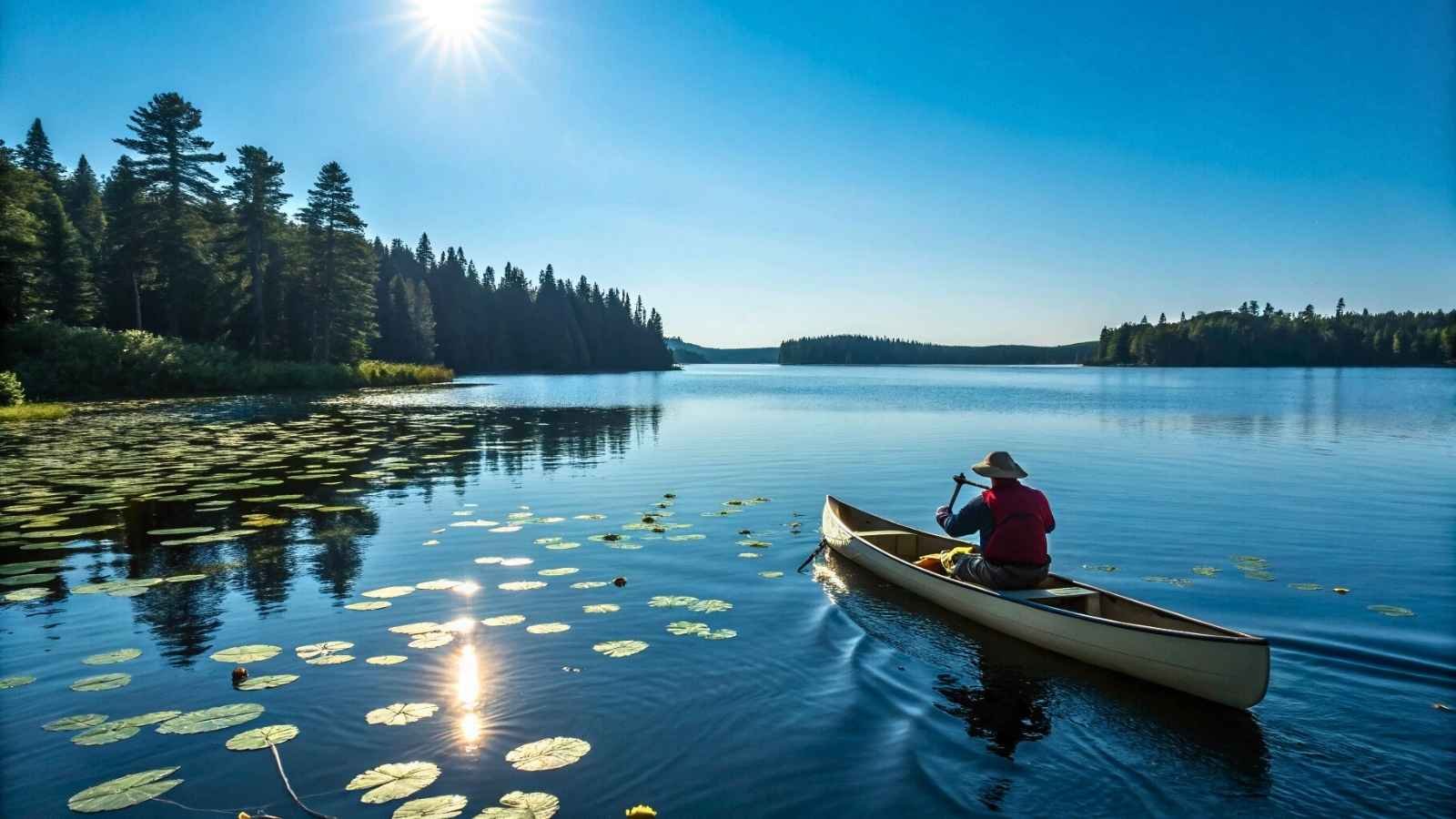
If you’ve ever wanted to live where the stars are still sharp in the sky and loons echo across pristine lakes, Ely is your kind of place. Set at the edge of Superior National Forest and the world-famous Boundary Waters Canoe Area Wilderness, Ely is a rare mix of rugged isolation and neighborly charm. This isn’t a suburb of anything—it’s wilderness with a heartbeat.
Ely isn’t for someone who needs constant stimulation. But if you love quiet trails, frozen lakes, and fiery fall colors, you’ll find the rhythm here rewarding. Winters are serious—snowmobiling, ice fishing, and flannel-friendly. Summers are spectacular, especially if paddling, foraging, or photography is your thing. The cost of living is low, housing is modest but cozy, and there’s a fierce local pride in keeping the town real.
Despite its remote setting, Ely has solid amenities: grocery stores, a small hospital, and active arts and education centers. If you’re drawn to wild spaces and want an affordable lakeside life, Ely’s isolation is its asset.
Quick Info
- Best Months to Visit: June–September
- Population: ~3,200
- Median Home Price: ~$200,000
- Nearest Hospital: Ely-Bloomenson Community Hospital
- Outdoor Highlights: Canoeing, snowshoeing, wildlife watching, fall foliage
- Closest Airport: Duluth International Airport (2 hrs)
7. Buena Vista, Colorado – San Isabel National Forest
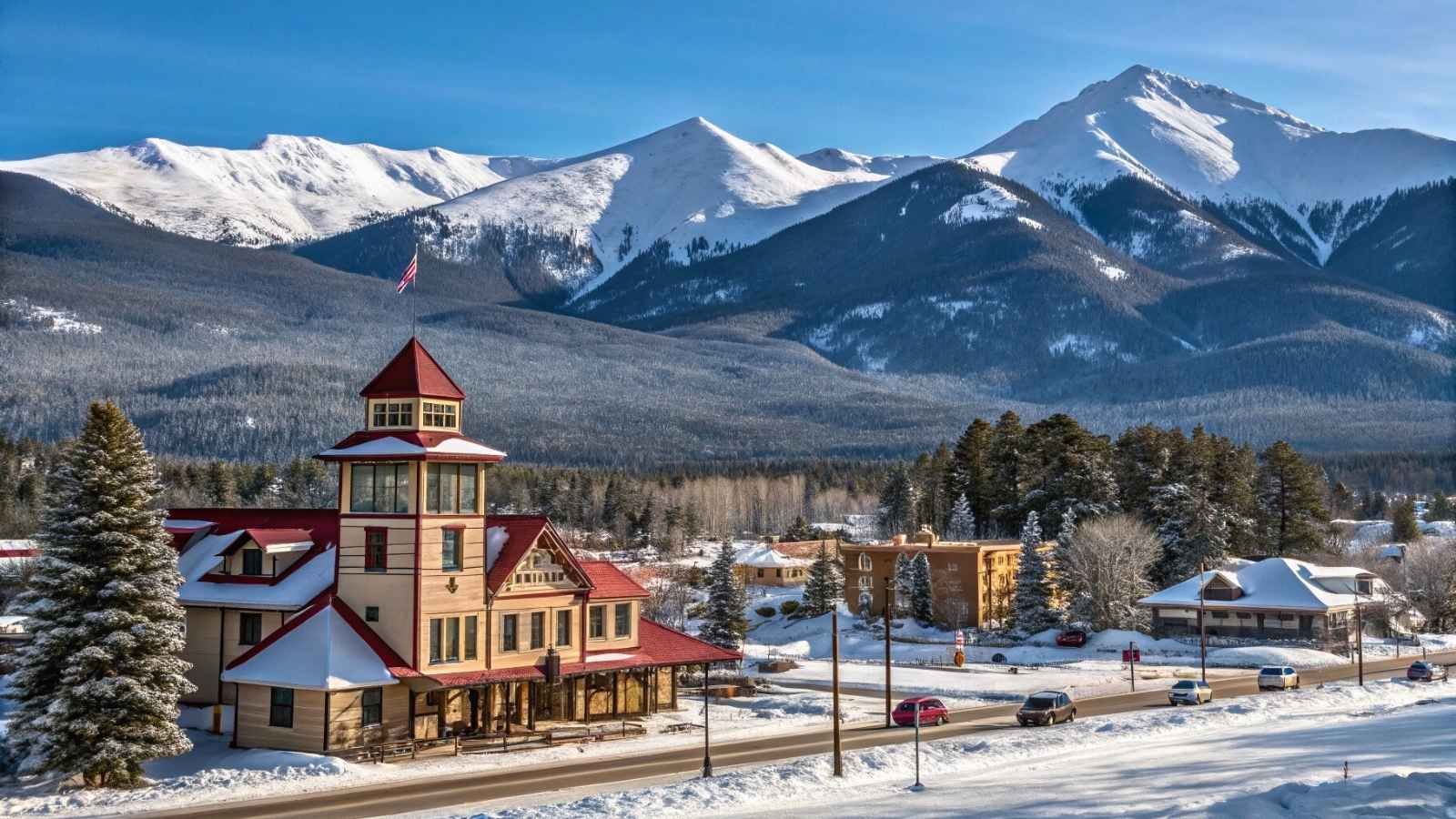
The name Buena Vista translates to “beautiful view,” and honestly, it undersells it. With the Collegiate Peaks towering in the background and the Arkansas River running through town, this place feels like a permanent postcard. It sits on the edge of San Isabel National Forest, giving you immediate access to hiking, camping, and Colorado’s famous fourteeners—all without the crowds of Denver or Boulder.
Retirees love Buena Vista for its health-minded community, easy access to outdoor activities, and historic downtown. You won’t find a Starbucks here, but you will find a café where the barista knows your dog’s name. It’s walkable, clean, and buzzing with live music and small-town festivals, especially in summer.
It’s not the cheapest on the list, but it’s still far more affordable than Colorado’s trendy resort towns. Plus, Chaffee County’s low property taxes and low crime make it a worthwhile long-term base for active retirees.
Quick Info
- Best Months to Visit: May–October
- Population: ~2,900
- Median Home Price: ~$450,000
- Nearest Hospital: Heart of the Rockies Regional Medical Center (30 min)
- Outdoor Highlights: 14ers, rafting, hiking, alpine lakes, hot springs
- Closest Airport: Colorado Springs Airport (2 hrs)
8. Susanville, California – Lassen National Forest

Susanville sits at the edge of the northeastern Sierra Nevada, where forests meet high desert and Lassen National Forest stretches endlessly to the west. If California conjures images of crowds, smog, and steep prices, this little-known pocket of the state will surprise you—it’s quiet, affordable, and deeply rooted in a rural way of life.
There’s a strong community feel here, and the outdoors isn’t just recreation—it’s part of daily life. The Biz Johnson Trail, a 25-mile converted railbed that weaves through canyons and pine forests, starts in town. Lassen Volcanic National Park is nearby, too, but the surrounding forest gives you miles of trails without an entry fee or selfie sticks in your way.
Susanville does have a mix of local challenges (like many small towns), but retirees appreciate the low cost of living, mild summers, and proximity to both forest and desert. It’s a working town that offers peace, space, and slow living.
Quick Info
- Best Months to Visit: May–October
- Population: ~16,700 (including nearby areas)
- Median Home Price: ~$230,000
- Nearest Hospital: Banner Lassen Medical Center
- Outdoor Highlights: Forest trails, biking, trout streams, and nearby volcanic geology
- Closest Airport: Reno-Tahoe International Airport (1.5 hrs)
9. Franklin, North Carolina – Nantahala National Forest
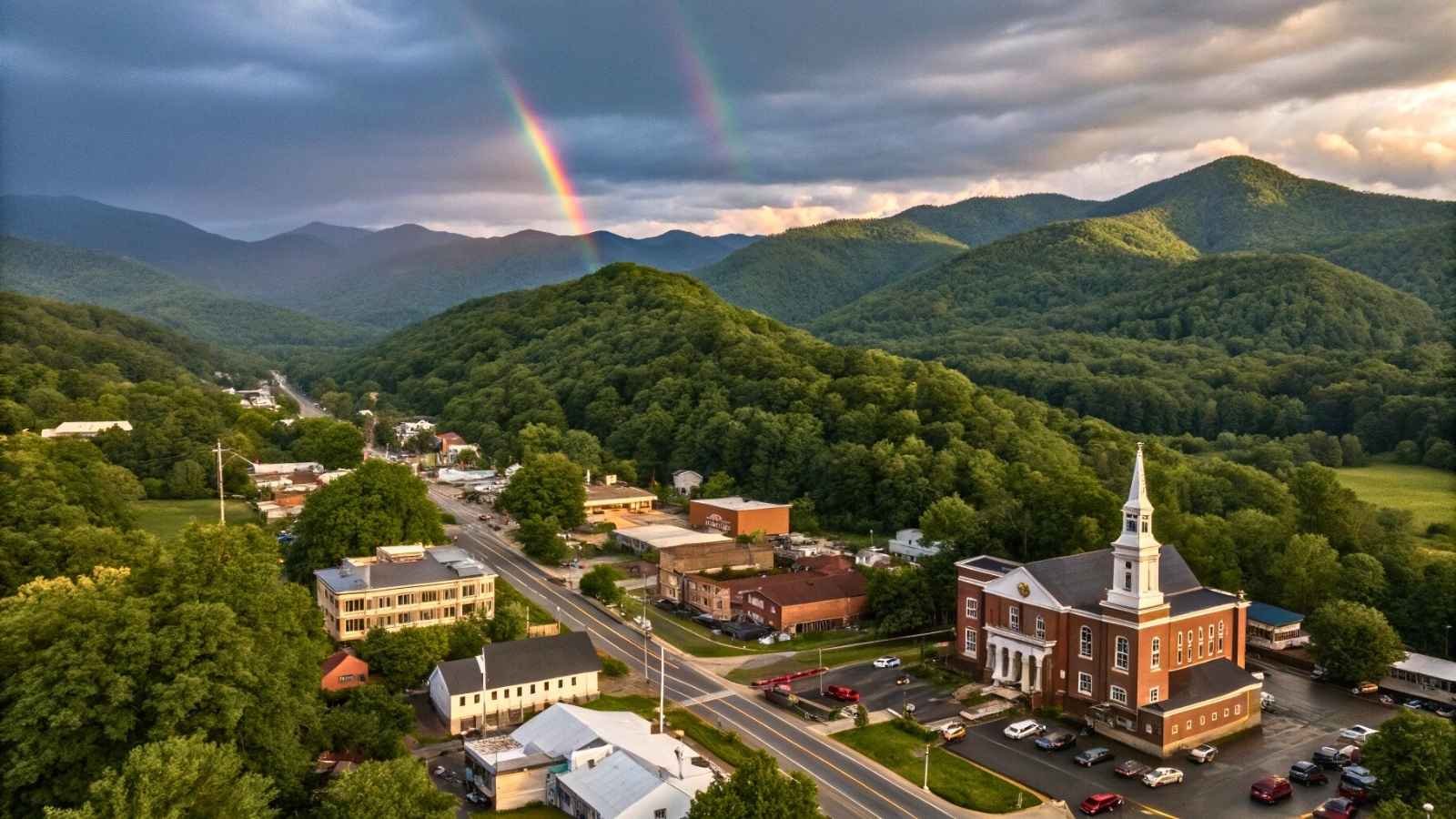
Franklin is an Appalachian gem tucked into western North Carolina’s misty mountains. Surrounded by the Nantahala National Forest, this small town delivers big when it comes to natural beauty, cost of living, and Southern friendliness. The forest is a blanket of waterfalls, winding backroads, and old logging trails that retirees quickly adopt as part of their daily life.
The downtown area is charming without being touristy—antique shops, cafes, and local diners where everyone greets you with a nod. Thanks to its spot on the Appalachian Trail, Franklin also hosts a quirky mix of hikers, artists, and long-time locals. It has good medical facilities, nearby colleges for lifelong learning, and a surprising number of community events.
What makes Franklin shine is its affordability. You can still find homes under $250,000, and utilities and taxes stay low. That, paired with its mild climate and relaxed pace, makes it one of the best-kept retirement secrets in the Southeast.
Quick Info
- Best Months to Visit: April–June, September–November
- Population: ~4,200
- Median Home Price: ~$240,000
- Nearest Hospital: Angel Medical Center
- Outdoor Highlights: Waterfalls, hiking trails, scenic drives, trout fishing
- Closest Airport: Asheville Regional Airport (1.5 hrs)
10. Libby, Montana – Kootenai National Forest
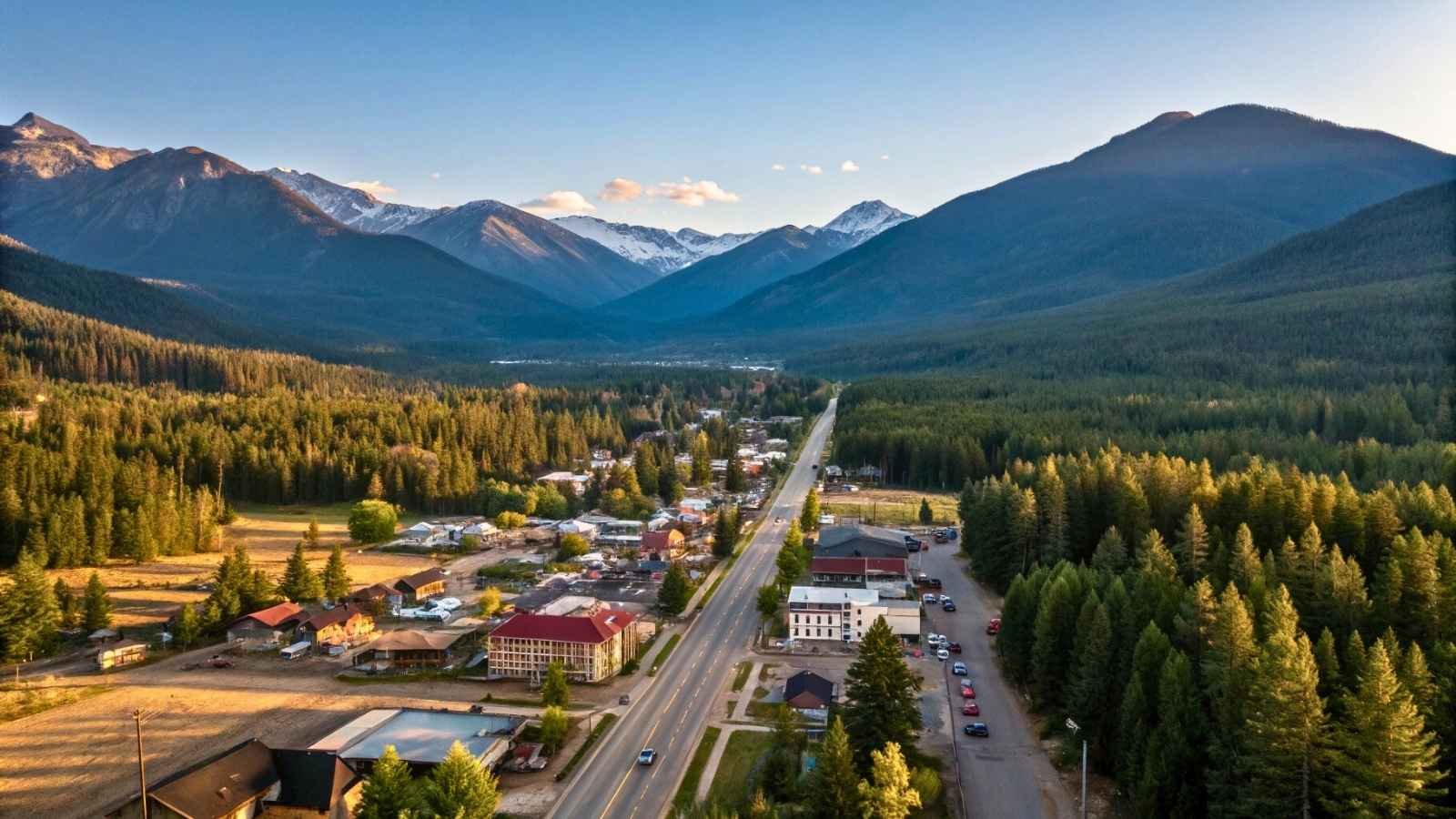
Way up in the northwest corner of Montana sits Libby, a town surrounded by Kootenai National Forest’s dense trees, sharp ridges, and glacial rivers. It’s a raw and rugged place, where the quiet is almost loud and the pace of life is dictated by the seasons. If that sounds appealing, Libby may just be your wild retirement dream come true.
Life here isn’t polished, but that’s part of its appeal. You’ll find unmatched outdoor access—from fishing in the Kootenai River to hiking the Cabinet Mountains Wilderness. Despite its frontier feel, the town offers the essentials: medical care, shops, and a strong local network of artisans and outdoor workers. And best of all, the cost of living is surprisingly low, even by Montana standards.
If you’re after peace, space, and access to jaw-dropping wilderness without a million-dollar price tag, Libby is tough to beat.
Quick Info
- Best Months to Visit: June–September
- Population: ~2,700
- Median Home Price: ~$265,000
- Nearest Hospital: Cabinet Peaks Medical Center
- Outdoor Highlights: Kootenai Falls, alpine lakes, remote trails, big skies
- Closest Airport: Glacier Park International Airport (2.5 hrs)
11. Glenwood, Arkansas – Ouachita National Forest

Something is grounding about a place like Glenwood—a town where people wave from porches, rivers run slow and wide, and the Ouachita National Forest hugs the horizon in every direction. It doesn’t try to be flashy. That’s exactly why folks love it. Tucked in west-central Arkansas, Glenwood offers an unspoiled blend of forest, hills, and warm community vibes.
The Ouachitas are older than the Rockies, which means the mountains here roll rather than spike, making them easier to explore. That’s good news for retirees who love a gentle morning hike or scenic drives without hairpin turns. Add to that access to the Caddo River and nearby hot springs, and you’ve got a lifestyle that’s both soothing and adventure-friendly.
But what truly seals the deal? Cost of living is among the lowest on the list, and you can buy a small home here for less than a luxury car in most cities. It’s the kind of place that makes early retirement feel within reach.
Quick Info
- Best Months to Visit: March–May, October–November
- Population: ~2,000
- Median Home Price: ~$160,000
- Nearest Hospital: CHI St. Vincent Hot Springs (30 min)
- Outdoor Highlights: Rolling forest trails, hot springs, kayaking, scenic drives
- Closest Airport: Clinton National Airport – Little Rock (1.5 hrs)
12. Athens, Ohio – Wayne National Forest
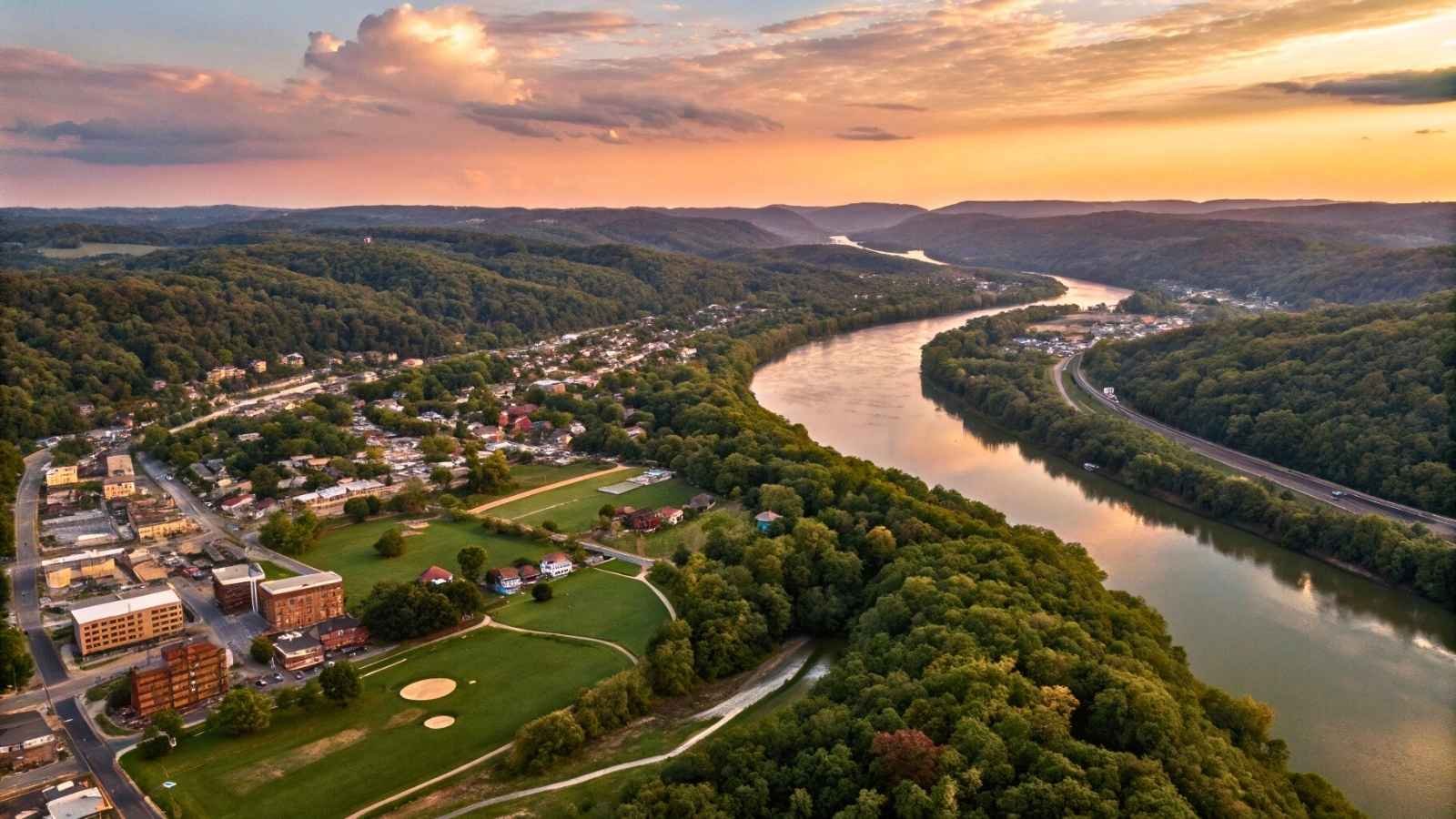
If you thought college towns were just for students, Athens, Ohio, might just flip that script for you. Wrapped in the green expanse of Wayne National Forest, Athens mixes Appalachian charm, affordable living, and a surprisingly active cultural life thanks to Ohio University’s presence in the heart of town.
You’ve got tree-lined neighborhoods, weekend farmers markets, and enough live music and lectures to keep your calendar full if you want it to be. And yet, step outside town just a few minutes, and you’re wandering through peaceful forest trails, covered bridges, and rolling hills that feel like a different century. It’s not a flashy scene—it’s a rich, rooted one.
Retirees here enjoy the walkability, low home prices, and small-town-meets-intellectual vibe. Healthcare is solid, broadband access is strong (rare in rural spots), and the sense of community makes it easy to feel at home even if you’re new.
Quick Info
- Best Months to Visit: April–June, September–October
- Population: ~25,000
- Median Home Price: ~$195,000
- Nearest Hospital: OhioHealth O’Bleness Hospital
- Outdoor Highlights: Forest hikes, historic sites, covered bridges, college events
- Closest Airport: John Glenn Columbus International (1.5 hrs)
13. Manchester, Vermont – Green Mountain National Forest
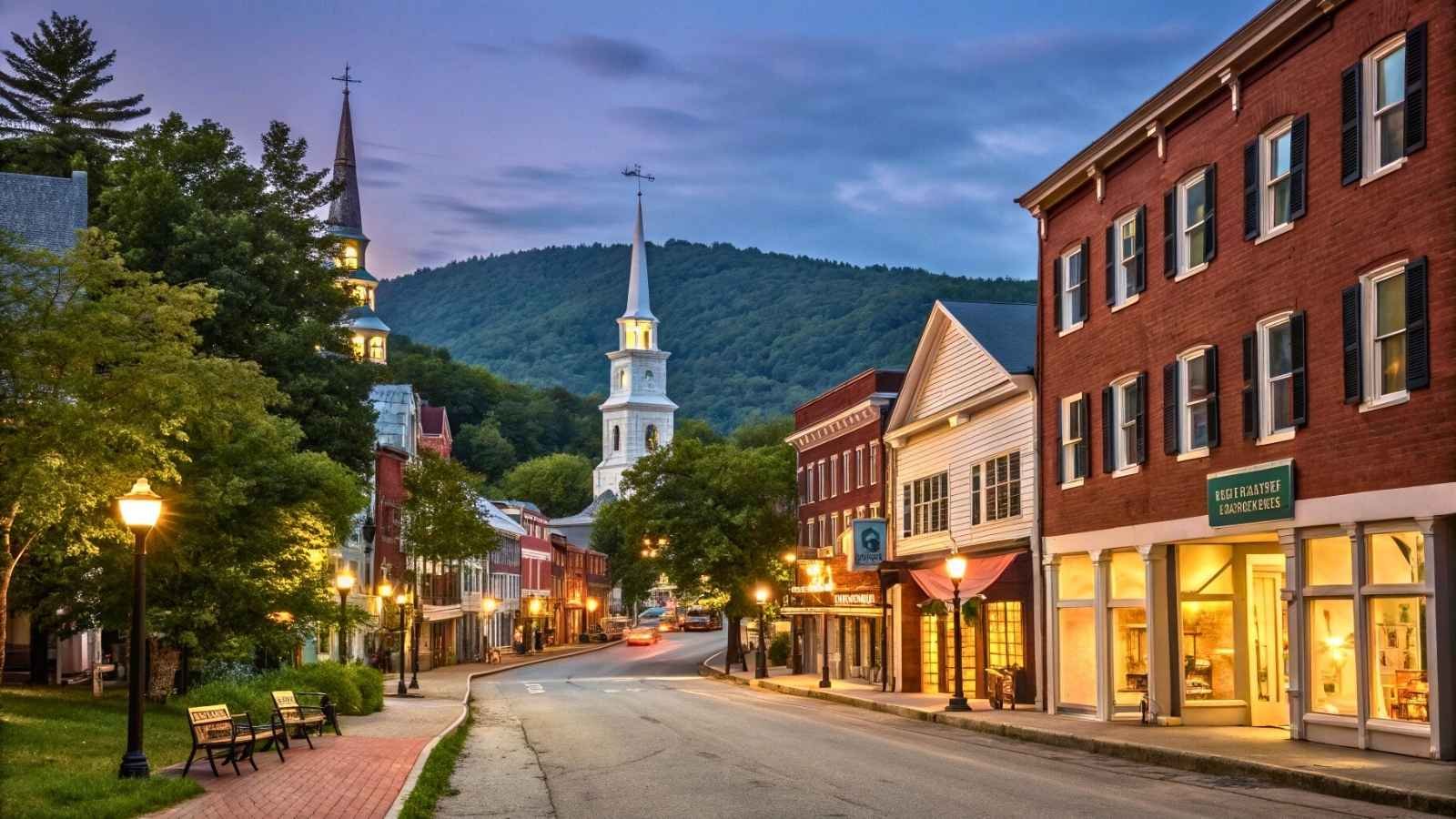
Manchester might just be New England’s most quietly captivating forest town. Flanked by the Green Mountain National Forest, it offers that rare blend of charm, sophistication, and wilderness. It’s known for boutique inns and artisanal markets, sure, but step a bit beyond downtown and you’re suddenly in a world of mossy trails, maple groves, and ridge-top vistas that feel untouched.
While Vermont tends to get lumped in with pricier Northeast living, Manchester surprises with moderate housing costs (for the region) and low property taxes, especially for retirees. The town is compact, walkable, and full of history, yet never stuffy. And it leans into its seasons—from fiery fall foliage to snowshoeing in winter and farmers markets all summer.
Manchester is perfect for retirees who want forest life with a touch of refinement—whether that’s enjoying a hike before hitting a local book festival or sipping cider after a farmers’ co-op run. It’s peaceful, but not dull.
Quick Info
- Best Months to Visit: May–October, and December for winter charm
- Population: ~4,000
- Median Home Price: ~$365,000
- Nearest Hospital: Southwestern Vermont Medical Center (30 min)
- Outdoor Highlights: Fall foliage, trail hiking, cross-country skiing, scenic byways
- Closest Airport: Albany International Airport (1.5 hrs)






